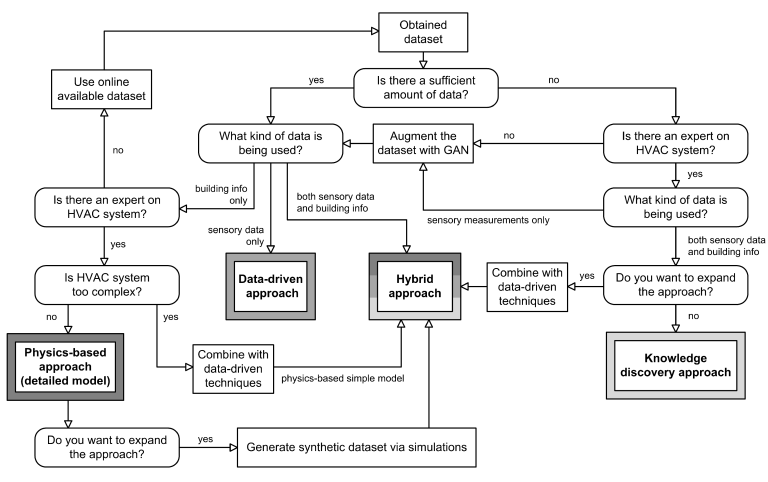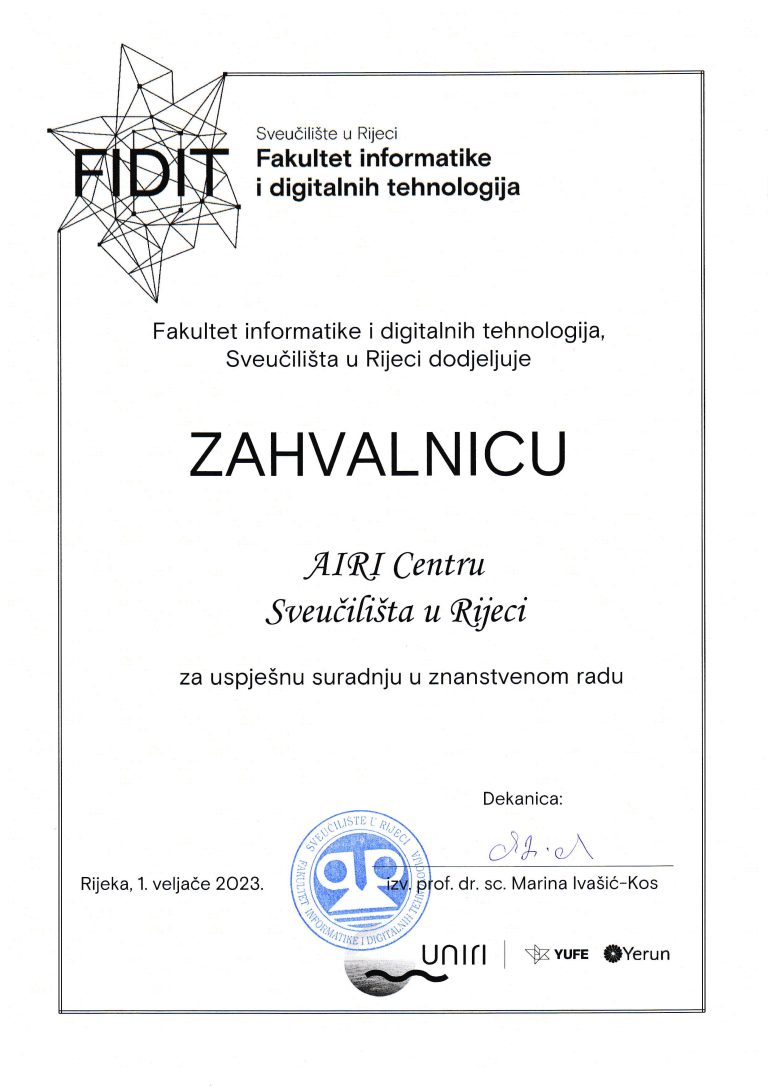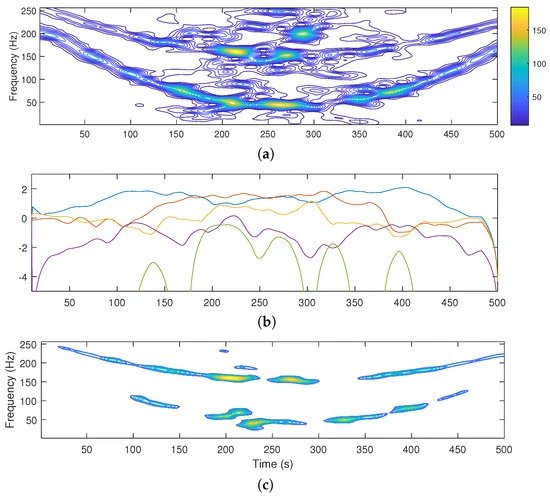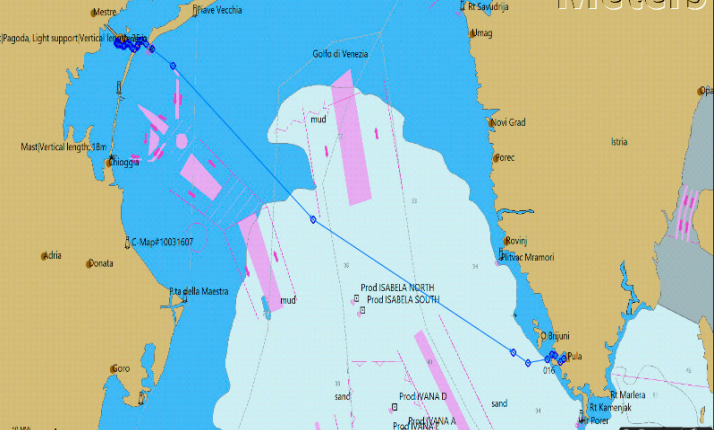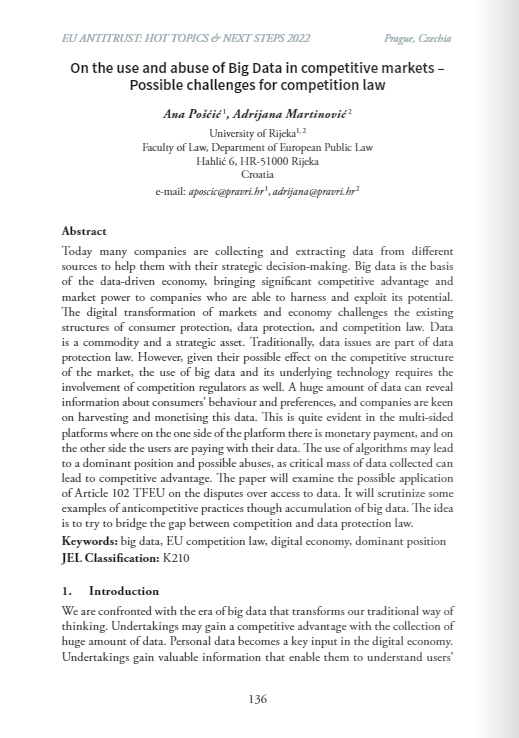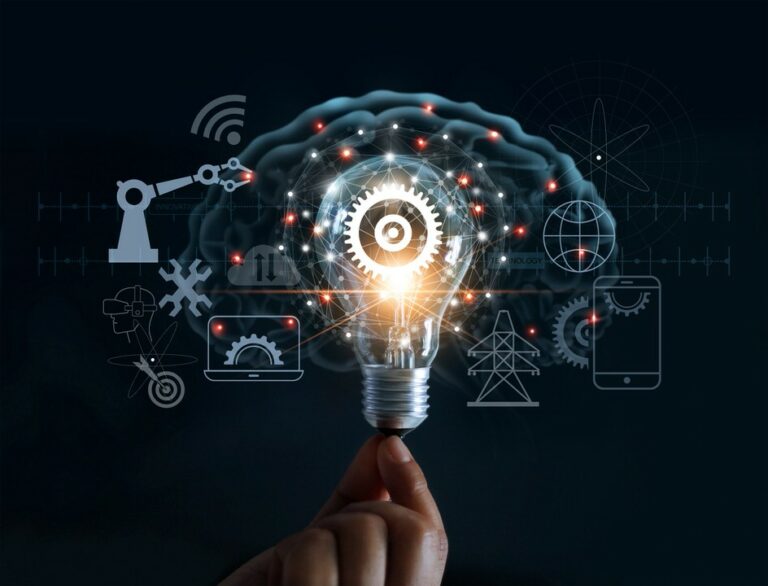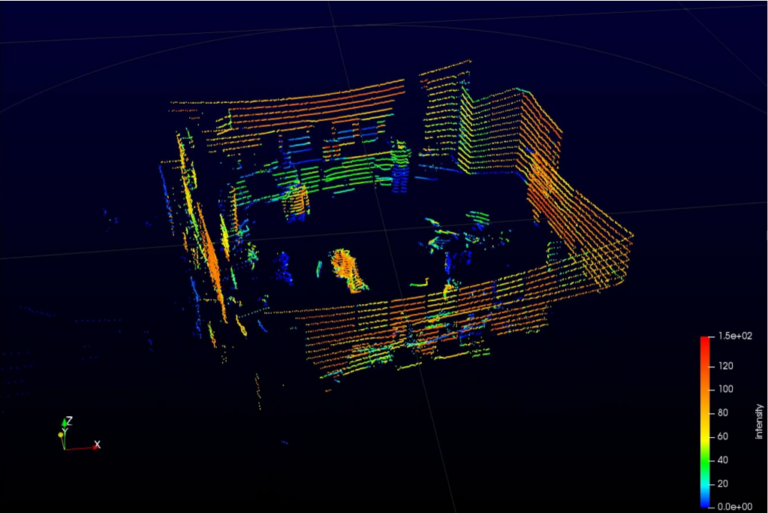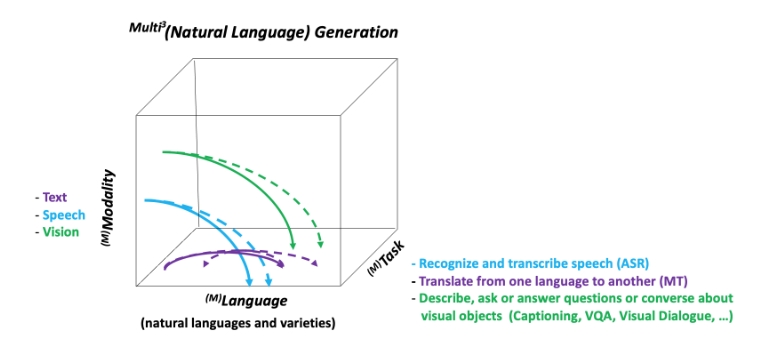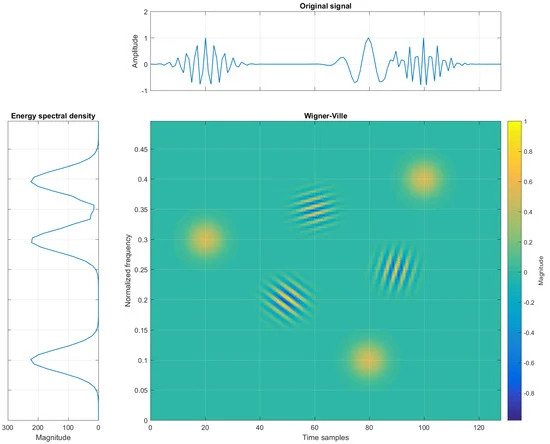Heating, ventilation, and air conditioning (HVAC) systems are a popular research topic because buildings’ energy is mostly used for heating and/or cooling. These systems heavily rely on sensory measurements and typically make an integral part of the smart building concept. As such, they require the implementation of fault detection and diagnosis (FDD) methodologies, which should […]
News
Recognition from the Faculty of Information and Digital Technologies
AIRI center was acknowledged by the Faculty of Informatics and Digital Technologies for successful collaboration in 2020 during the annual meeting of the FIDT.
Block-Adaptive Rényi Entropy-Based Denoising for Non-Stationary Signals
This paper approaches the problem of signal denoising in time-variable noise conditions. Non-stationary noise results in variable degradation of the signal’s useful information content over time. In order to maximize the correct recovery of the useful part of the signal, this paper proposes a denoising method that uses a criterion based on amplitude segmentation and […]
Emphasis on Occupancy Rates in Carbon Emission Comparison for Maritime and Road Passenger Transportation Modes
Carbon emissions generated by the transportation sector represent a large part of total greenhouse gas emissions and are thus subject to various policies and initiatives for emission reduction and the development of sustainable transportation networks. Furthermore, passenger transportation generates a significant amount of emissions within this sector, especially in those countries with large and developed […]
On the use and abuse of Big Data in competitive markets – Possible challenges for competition law
INNO2MARE – Strengthening the capacity for excellence of Slovenian and Croatian innovation ecosystems to support the digital and green transitions of maritime regions
European Digital Innovation Hub Adria Croatia
Application of Laser Systems for Detection and Ranging in the Modern Road Transportation and Maritime Sector
The development of light detection and ranging (lidar) technology began in the 1960s, following the invention of the laser, which represents the central component of this system, integrating laser scanning with an inertial measurement unit (IMU) and Global Positioning System (GPS). Lidar technology is spreading to many different areas of application, from those in autonomous […]
Neural Natural Language Generation: A Survey on Multilinguality, Multimodality, Controllability and Learning
Developing artificial learning systems that can understand and generate natural language has been one of the long-standing goals of artificial intelligence. Recent decades have witnessed an impressive progress on both of these problems, giving rise to a new family of approaches. Especially, the advances in deep learning over the past couple of years have led […]
Entropy-Based Concentration and Instantaneous Frequency of TFDs from Cohen’s, Affine, and Reassigned Classes
This paper explores three groups of time–frequency distributions: the Cohen’s, affine, and reassigned classes of time–frequency representations (TFRs). This study provides detailed insight into the theory behind the selected TFRs belonging to these classes. Extensive numerical simulations were performed with examples that illustrate the behavior of the analyzed TFR classes in the joint time–frequency domain. […]
